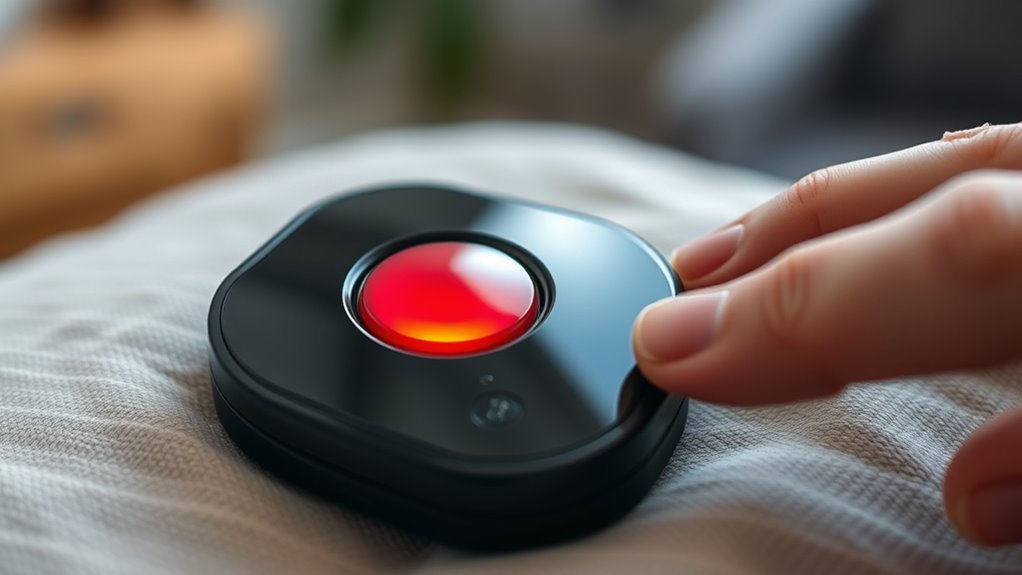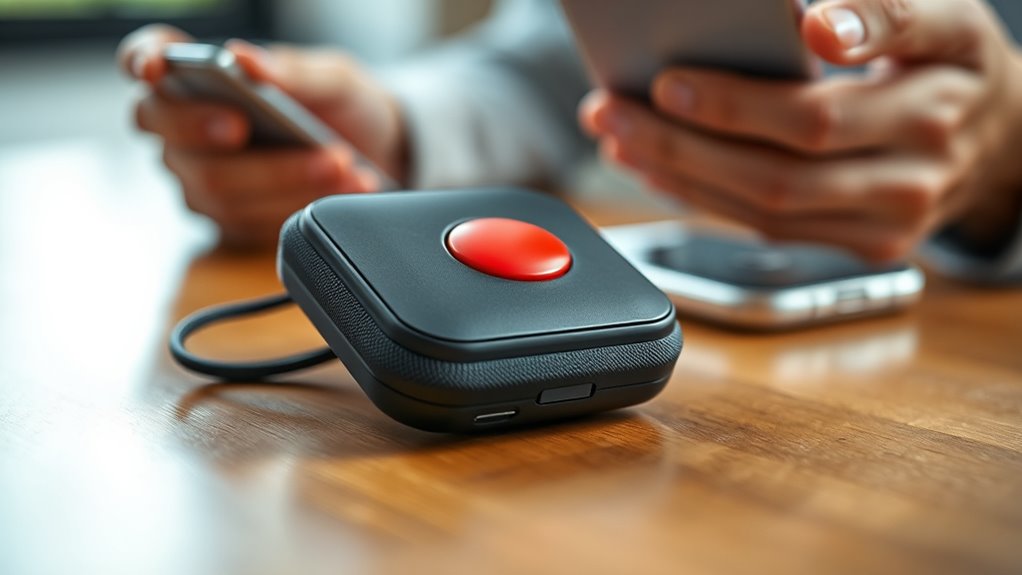When choosing a medical alert system, focus on devices that offer reliable features like GPS tracking, two-way communication, fall detection, waterproofing, and cellular connectivity. Look for user testimonials to see how easy the systems are to operate and how quickly they respond in emergencies. Prioritize simple, comfortable devices with long battery life and strong coverage. To find the best fit for your needs and discover what makes some systems stand out, keep exploring the options available.
Key Takeaways
- Assess device features like GPS, fall detection, waterproofing, and cellular connectivity for comprehensive safety.
- Review user testimonials to gauge real-world performance, ease of use, and responsiveness.
- Ensure the system seamlessly integrates into daily routines and is simple to operate.
- Prioritize devices with reliable battery life and waterproof design for versatile use.
- Choose a trusted brand with proven effectiveness, positive reviews, and responsive emergency support.

Choosing a medical alert system is an important decision that can provide peace of mind for both you and your loved ones. When you’re exploring different options, paying attention to the technology features is vital. Modern emergency response devices come with a range of advanced capabilities, such as GPS tracking, two-way communication, and automatic fall detection. These features guarantee you’re quickly connected to help in any situation, whether you’re at home or out and about. For example, GPS tracking allows emergency responders to locate you precisely if you’re unable to communicate, which can be life-saving. Two-way voice communication means you can speak directly with a dispatcher without needing to reach a phone, adding an extra layer of safety. Fall detection sensors, which automatically alert emergency services if a fall is detected, are particularly valuable for seniors at risk of falling and injuring themselves. Additionally, understanding the effectiveness and safety of these devices through user testimonials can help ensure you choose a reliable system. Listening to user testimonials can give you valuable insights into how these features perform in real life. Many users praise systems with reliable technology features for their ease of use and responsiveness. They often share stories where a quick response made all the difference, highlighting how these devices have improved their independence and safety. Conversely, some testimonials point out limitations, such as false alarms or connectivity issues, which can help you weigh the pros and cons of specific systems. User feedback can also reveal which brands are most user-friendly, especially for those who may not be tech-savvy.
When choosing a device, consider how seamlessly it integrates into your daily routine. Does it have a simple interface? Is it easy to wear or carry? Some systems offer waterproof features, allowing you to wear them in the shower or pool, which is a common concern. Battery life is another important factor—longer-lasting batteries mean fewer worries about frequent recharging. Additionally, check if the system offers cellular connectivity, especially if you live in an area with poor landline service, so you’re always covered no matter where you are.
Ultimately, the right medical alert system should combine robust technology features with positive user testimonials, ensuring you’re investing in a device that truly meets your needs. By researching these aspects carefully, you’ll feel more confident in choosing a system that provides safety, independence, and peace of mind for both you and your loved ones.
Frequently Asked Questions
Can Medical Alert Systems Be Used Internationally?
Yes, you can use medical alert systems internationally, but it depends on the provider. Look for systems with international coverage and language support to guarantee effective communication abroad. Some systems offer global networks, allowing you to get help no matter where you are. Always check with the provider about their international capabilities and whether they support your preferred language, so you’re fully protected no matter your destination.
Are There Options for Non-Verbal Communication?
Yes, many medical alert systems offer options for non-verbal communication, like visual signals or alert lights, to help you communicate during emergencies. You can also set emergency contacts who will be notified via calls or texts when you activate the device. These features guarantee you stay connected and safe, even if speech isn’t possible. Check the system’s specifications to find the best fit for your needs.
How Do System Subscriptions Work?
System subscriptions work through various plans that you select based on your needs. You typically choose a subscription plan, which may include features like round-the-clock monitoring or GPS tracking. Billing cycles can be monthly or annual, depending on the provider. You’ll pay regularly according to your chosen plan, often through auto-pay, ensuring continuous access to emergency response services without interruption.
What Is the Battery Life of These Devices?
Remember when phones lasted days on a single charge? Modern medical alert devices typically offer excellent battery longevity, often lasting 24 to 48 hours on a full charge. Power management features help extend this time by conserving energy during inactivity. To guarantee you’re always safe, check the device’s battery life before purchasing and keep it charged regularly, so it’s ready whenever you need help.
Are There Medical Alert Systems Suitable for Pets?
Yes, there are medical alert systems designed specifically for pets to enhance pet safety and animal monitoring. These devices often come as collars with GPS tracking and emergency buttons, allowing you to monitor your pet’s location and summon help if needed. They’re ideal for pets with health issues or those prone to wandering, giving you peace of mind knowing you can quickly respond to any emergencies involving your furry friend.
Conclusion
Choosing the right medical alert system is like finding a trusted lighthouse in a storm—it guides you safely back to shore when every second counts. Imagine Sarah, who felt vulnerable after her fall but was quickly connected to help thanks to her device. Studies show that prompt responses can reduce serious injuries. By selecting a system that suits your needs, you’re setting a steady course toward peace of mind, knowing help is always just a button away.








